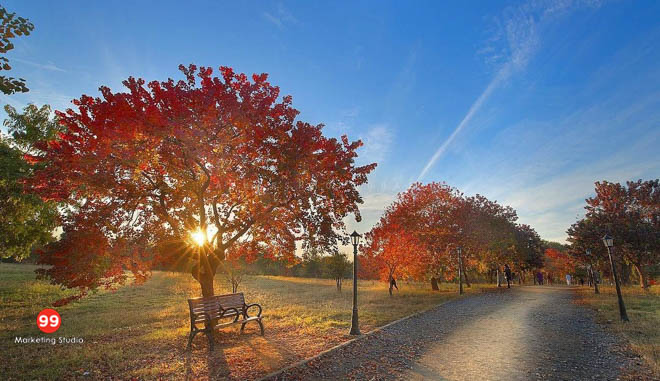How to Become a Photographer in Pakistan: A Step-by-Step Guide
Introduction:
Embarking on a photography career in Pakistan presents a journey filled with creativity, passion, and endless possibilities. Whether you’re captivated by the vibrant landscapes, rich culture, or dynamic urban life, photography offers a unique lens to capture and share these experiences. At 99 Marketing Studio, we understand the allure and challenges of this path and are here to guide aspiring photographers.
Step 1: Understand the Basics
Before diving into the world of photography, it’s crucial to understand the fundamentals. This includes familiarizing yourself with different types of photography, understanding composition, and mastering your equipment. Consider enrolling in photography courses or workshops to solidify your foundation. Resources like our 99 Marketing Studio Blog can offer valuable insights and hands-on experience.
Step 2: Choose Your Niche
Photography is a vast field with numerous specializations. From wedding and portrait photography to landscape and wildlife photography, finding your niche is essential. The first thing that comes to mind of new Pakistani photographers is mostly wedding photography, but actually there are a lot more options, so keep your mind open and don’t try to do what everyone else is doing, be unique be creative and be confident. Focusing on a specific area can help you become an expert and stand out in a competitive market.
- Wedding Photography: Capturing the emotions and moments of weddings. This includes pre-wedding shoots, ceremonies, receptions, and engagement photos.
- Portrait Photography: Focusing on individuals or groups to capture their personalities and emotions. This can include family portraits, headshots for professionals, and creative portraits.
- Fashion Photography: Working with designers, models, and magazines to create visually compelling images that highlight clothing, accessories, and fashion trends.
- Product Photography: Creating images for businesses to promote their products. This involves capturing products in a way that makes them appealing to consumers.
- Food Photography: Specializing in capturing food and beverages for restaurants, cookbooks, blogs, and advertising. This requires an understanding of lighting and composition to make the food look appetizing.
- Landscape Photography: Capturing natural and urban landscapes. This can involve travel to various locations to photograph mountains, forests, cities, and seas.
- Wildlife Photography: Documenting animals in their natural habitat. This niche requires patience and often travel to remote locations.
- Sports Photography: Capturing the intensity and action of sports events. This requires fast reflexes and knowledge of the sport to anticipate key moments.
- Event Photography: Documenting events such as concerts, festivals, corporate events, and parties. This involves capturing both the main events and the attendees’ reactions.
- Real Estate Photography: Creating attractive images of properties for sale or rent. This includes both interior and exterior shots, requiring skills in lighting and wide-angle photography.
- Travel Photography: Capturing the essence of different cultures, landscapes, and experiences encountered while traveling.
- Street Photography: Documenting everyday life and society on the streets. This niche focuses on candid moments and the human condition.
Step 3: Build Your Portfolio
A strong portfolio is your ticket to attracting clients and showcasing your skills. Start by taking photos within your chosen niche and experiment with different styles and techniques. Your portfolio should reflect your unique perspective and skill set. Use online platforms and social media to share your work, gaining visibility and feedback.
You can upload your portfolio to either of the following
- Social media (For example Instagram)
- Google Drive ( You can share links to clients so they can review)
- Your own website. (This can be a little complicated but still worth it)
Step 4: Invest in Quality Equipment
While creativity and skill are paramount, having the right equipment can significantly enhance your photography. This doesn’t mean you need the most expensive gear from the start. Begin with a reliable camera and lens, and gradually invest in additional equipment as you grow.
We are biased towards Sony Cameras as we have almost always used those. So let me suggest a few options from the sony range below.
- Sony Alpha a6100 An upgrade to the a6000, the a6100 provides enhanced autofocus capabilities, a 24.2MP sensor, and 4K video recording.
- Sony a6400 or Sony a6500 (which every you can find in better price) These are more professional comapred to the a6100.
- Sony A7iii. The most popular sony camera, everyone loves it, it takes great photos and videos. So this is for those who are serious about photography.
- Sony A7c. I really love this camera, it is almost the same as a7iii but it has very slight upgrades and also it has a light compact body.
Step 5: Market Yourself
In today’s digital age, marketing is key to a successful photography career. Create a professional website to showcase your portfolio, and utilize social media platforms to reach a broader audience. Networking with other photographers and professionals in the industry can also open doors to new opportunities.
Conclusion:
Becoming a photographer in Pakistan is a journey of continuous learning and passion. By understanding the basics, choosing your niche, building a strong portfolio, investing in quality equipment, and effectively marketing yourself, you can turn your dream into a reality. At 99 Marketing Studio, we’re committed to supporting aspiring photographers with resources, services, and inspiration. Embark on your photography journey with confidence and creativity, and let your vision captivate the world.







